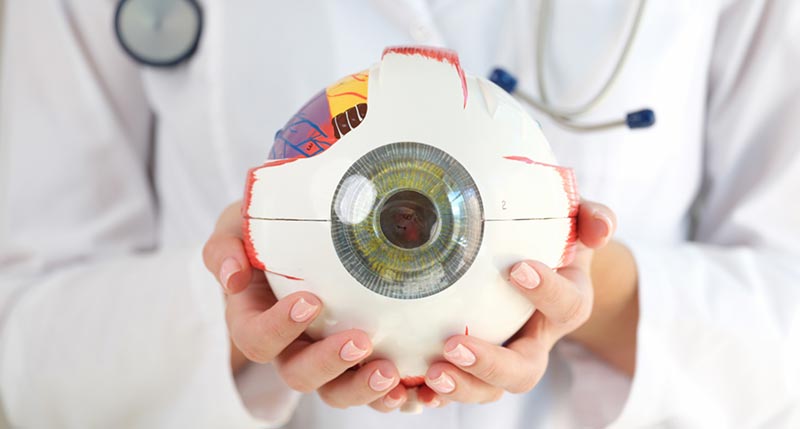Andalusia Pediatrics: Compassionate Take Care Of Your Children
Andalusia Pediatrics: Compassionate Take Care Of Your Children
Blog Article
The Pros and Disadvantages of Different Refractive Surgical Treatments for Improved Eyecare

LASIK Surgery
LASIK surgery is a typically carried out refractive procedure that aims to correct vision issues such as nearsightedness, astigmatism, and farsightedness. Throughout the procedure, a thin flap is produced on the cornea, and a laser is made use of to reshape the underlying cells, correcting the refractive error.
One of the main benefits of LASIK surgery is the rapid enhancement in vision experienced by several clients. It is vital for people taking into consideration LASIK surgical procedure to go through a thorough assessment by an eye treatment expert to establish if they are appropriate prospects for the treatment.
PRK Procedure
The PRK procedure, likewise understood as Photorefractive Keratectomy, is a kind of refractive surgery that aims to remedy vision concerns comparable to LASIK surgery. Unlike LASIK, which includes developing a flap in the cornea, PRK functions on the surface area layer of the cornea.
One of the benefits of PRK over LASIK is that it removes the danger of flap-related issues because no flap is developed during the surgical procedure. Despite the longer recovery duration, PRK can be an ideal choice for people looking for vision adjustment surgical procedure.
SMILE Surgical Procedure
An advanced refractive surgical procedure technique getting popularity in the area of ophthalmology is SMILE Surgical procedure. Tiny Cut Lenticule Removal (SMILE) is a minimally intrusive procedure that deals with vision by reshaping the cornea making use of a femtosecond laser. Unlike standard LASIK surgery, SMILE Surgical treatment involves developing a tiny cut in the cornea to remove a lenticule, which leads to much less disruption to the corneal structure and possibly quicker recuperation times.
One of the key advantages of SMILE Surgical treatment is its capacity to treat myopia (nearsightedness) and astigmatism with high accuracy, leading to outstanding aesthetic outcomes for individuals. The minimally intrusive nature of the treatment likewise decreases the threat of issues such as dry eye syndrome, making it a positive choice for people looking for refractive surgical treatment.

LASEK Strategy
Having checked out the advantages and factors to consider of SMILE Surgery, one more noteworthy refractive surgical procedure method worth analyzing is the LASEK Strategy. LASEK, which represents Laser-Assisted Subepithelial Keratectomy, is a type of laser eye surgery that aims to fix refractive errors such as myopia (nearsightedness), hyperopia (farsightedness), and astigmatism.
Unlike LASIK, LASEK does not include producing a corneal flap. Instead, during a LASEK treatment, the surgeon makes use of a watered down alcohol remedy to loosen up the slim outer layer of the cornea, called the epithelium. This layer is then carefully relocated apart to allow the laser to improve the underlying corneal cells. As soon as the cornea has actually been reshaped to the preferred degree, the epithelial layer is repositioned.
One of the key advantages of LASEK is that it can be ideal for individuals with thin corneas who might not be great candidates for LASIK. In addition, LASEK generally results in marginal post-operative discomfort and a quicker recuperation time compared to PRK. Nonetheless, the visual recuperation process with LASEK might be slightly longer than with LASIK.
Implantable Call Lenses
Implantable Contact Lenses supply a long-term vision improvement service for people looking for an option to standard contact lenses or glasses. These lenses, likewise recognized as phakic intraocular lenses, are surgically placed right into the eye to deal with refractive errors such as myopia (nearsightedness), hyperopia (farsightedness), and astigmatism. cardiologist andalusia. Unlike standard call lenses that rest on the surface of the eye, implantable call lenses function within the eye itself, providing clear vision without the requirement for daily upkeep or removal
Among the vital advantages of implantable get in touch with lenses is their durability. Once inserted, they can stay in the eye forever, using steady and constant vision modification. Furthermore, these lenses can be an excellent alternative for individuals that are not great candidates for laser eye surgical procedure or that prefer a reversible vision modification treatment.
However, implantable get in touch with lenses do bring some dangers, including the capacity for cataracts or enhanced eye stress. It is crucial for individuals considering this option to consult with an eye care expert to determine if implantable contact lenses are the right selection for their details needs and eye health and wellness.
Verdict
To conclude, each sort of refractive surgical procedure has its very own advantages and downsides. LASIK surgical treatment is prominent for its quick recovery time, while PRK treatment might be ideal for individuals with thin corneas. SMILE surgery provides minimal pain throughout the procedure, but LASEK strategy might have a longer recovery process. Implantable contact lenses give an option for those who are not appropriate candidates for traditional surgical procedures. Individuals ought to consult with their eye care copyright to establish the very best option for their specific requirements.

Generally, SMILE Surgical procedure provides a promising choice for people looking to enhance their vision through refractive surgical procedure.
Report this page